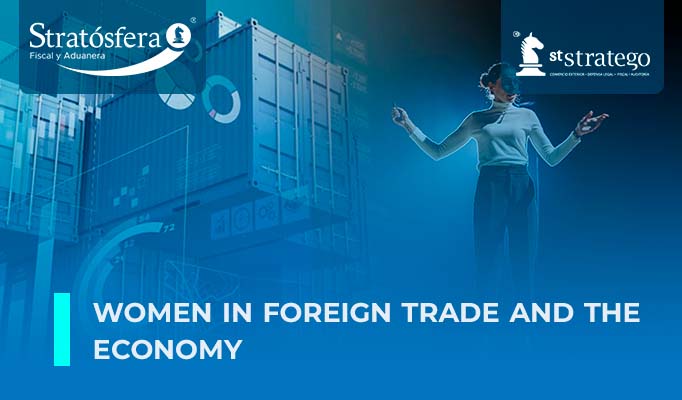 Throughout history, women have experienced various difficulties in gaining access to the spheres of knowledge and economic activity, as a result of gender roles and the implications these have had on societies.
Throughout history, women have experienced various difficulties in gaining access to the spheres of knowledge and economic activity, as a result of gender roles and the implications these have had on societies.
With global progress and the rise of the feminist struggle, gender inequalities have become one of the main concerns to be addressed, consolidating one of the United Nations Sustainable Development Goals for 2030: gender equality. Of course, it implies taking action in different dimensions, such as education, health, violence and economy, among others. Without detracting from the other fields, actions in the last dimension stand out for promoting women’s economic autonomy, which in some cases can facilitate the exit from a situation of abuse or dependence on another person, leading to an improvement in their quality of life.
In addition, promoting the solution of problems such as the wage gap, the low participation of women in the labor market and the barriers faced by women entrepreneurs in market insertion (just to mention a few), would enhance the economic growth and development of a country in general. In particular, commerce is one of the activities that receives special attention, since it is one of the subsectors that accounts for the highest concentration of female employment.
Although in recent years the world’s institutions and governments have striven to contribute to the goal of gender equality by developing social programs and creating new indicators to measure results, there is still a long way to go in the area of statistics. The disaggregation of economic and commercial data by sex provides relevant information for the design of tools that can really help in the achievement of equality objectives, but there are currently not many variables that are analyzed in this way.
For this reason, there is information that is not sufficiently specific or indicators that are only qualitative in nature, although it should be noted that global commitments have recently been renewed to cooperate in the structure of databases separated by sex. Taking these aspects into account, some features of the current situation of women in the economy and in foreign trade will be discussed below, from a national, regional and global perspective, subject to the availability of information.
PRESENCE OF WOMEN IN FOREIGN TRADE

The main export destinations of these companies were the United States (39% of their exports), Japan (8%) and Germany (7%). About 75% of the companies that exported regularly reported exporting to 3 countries or less, while 10% exported to 5 countries or more. In fact, the results of the study suggest that exports did not become a significant source of income, in most cases making up less than 10% of their total sales; only a quarter of the companies surveyed had an export share of more than 51% of their annual sales.
An estimate by the World Economic Forum (mentioned in Pro Magazine, 2020) indicates that only 1 in 5 exporting companies is run by a woman. However, the World Bank and the World Trade Organization (WTO), in their joint report “Women and Trade: The Role of Trade in Promoting Gender Equality” (2020), state that companies engaged in international trade activities employ more women, since in developing countries, women represent 33.2% of the workforce in this type of companies; as opposed to non-exporting companies that employ 24.3% and non-importing companies that have a female workforce of 28.1%.
The analysis also indicates that women have a greater presence in companies that participate in global value chains (36.7% of the workforce, 10.9 percentage points more than companies not linked to GVCs) and in companies that are foreign-owned (37.8% of the workforce, 12.2 points higher than domestic companies). Similarly, it is noted that as countries specialize in more complex commercial and GVC activities, the proportion of women in the workforce increases. As can be seen in the difference between the 39% female participation in the commodity sector and the 46% in innovative activities; and at the same time, the wage gap decreases in the same direction. Finally, it is highlighted that, despite the fact that the proportion of firms owned by women increases as the complexity of trade increases, women-owned exporting firms make up less than 4% of the total number of firms in advanced countries in manufacturing and services (WB and WTO, 2020). In fact, internationally active firms founded by women are rare and tend to be less involved in trade than those founded by men.
BARRIERS RESTRICTING WOMEN IN FOREIGN TRADE

- Difficulty in building a network of contacts and business partners abroad: Not having a network makes it difficult to obtain information and opportunities, which in turn can complicate the development of processes necessary to trade.
- Access to information on the international market: Information on external dynamics is difficult to obtain and market studies are expensive, but they are essential if you want to market your product abroad.
- Access to financing: Access to financing and working capital is crucial to promote the growth of a business; however, MSMEs are the sector of enterprises that have the greatest difficulty in obtaining them, and they are precisely the types of enterprises that are predominantly owned and operated by women.
- Access to business development services and formal training: Many women consider that a major difficulty is not having clear and reliable information about the requirements for importing or exporting, whether in terms of time, costs, procedures or authorizations.
- Work-life balance: Women spend the most time on unpaid work, household activities and childcare, which takes time away from the development of their businesses.
These factors, together with the lack of institutional support, the high costs of the activity and the lack of knowledge about the possibility of exporting products or services, have prevented women from accessing the international market or, in other cases, have discouraged them from trying to do so.
In addition, many women experience situations that prevent them from entering not only commerce, but also the labor market. Although among the reasons why unemployed women do not look for work are lack of schooling or experience and market reasons (they are waiting for a response from an employer or there is no demand for their profession or trade), the truth is that the most important reasons are gender-related, whether due to pregnancy, caring for someone in the home, not being allowed by a family member, or job discrimination.
WHAT BENEFITS WOULD FULL INCLUSION OF WOMEN IN THE ECONOMY BRING?

According to INEGI figures, women are considered to constitute 65.2% of the national GDP (Forbes, 2021), some are heads of household and others are not, but the vast majority are decision makers. It was even estimated that their unpaid work in the home contributed 16.8% of GDP in 2019 (INMUJERES, 2022), this work includes domestic activities and care of people, and women invest more than twice as much time in this as men. The Mexican Institute for Competitiveness (IMCO), issued a bulletin in March 2021 in which it addresses different points about the potential growth that the Mexican economy could experience if it sought the inclusion of women in the labor market at least at the average participation rate of OECD countries (which was 56% in 2019). It noted that if 8.2 million Mexican women entered the labor market, “GDP growth over the next 10 years would be equivalent to an additional 3.5 trillion pesos, meaning a cumulative real increase of 15% of 2020 GDP” (p.2), this through higher income and savings attributable to women, and increased tax revenue.
Various studies suggest that women benefit less from trade than men, due to the nature of the activities that concentrate female employment and the size of the companies in which they work or own. Working mainly in the service sector or in micro-enterprises, the effects of trade liberalization may not be beneficial if the activity or enterprise is not sufficiently competitive. However, this perspective is by no means general. In reality, today’s globalized world and the highly competitive scenario of world trade reduce the possibility of discrimination against women, since their labor is necessary and essential for export industries that have significant female employment rates; as the World Bank and the WTO (2020) state: “In an integrated world, the competitive pressure generated by trade increases the cost of discrimination against women. Countries that do not allow women to participate fully in the economy are less competitive internationally.”
Trade also favors economic equality, as it has a positive impact on wages and the creation of formal jobs for women. According to the same source mentioned above, it is estimated that if manufacturing exports double (due to trade liberalization), total wages in the sector increase by an average of 5.8 percentage points; in addition, trade itself decreases the probability that a woman will work in the informal sector. Higher incomes for women translate into increased well-being for them and their families, creating virtuous circles and expanding their economic output. A study by the McKinsey Global Institute (referred to in IDB, 2017), states that if there were equity in the economic participation of men and women, this would have an impact on world growth such that global GDP would increase by 11% by 2025 (the Latin American and Caribbean region could increase by up to 14%), and would increase the productivity of economies by up to 25%.
T – MEC
According to SheTrades (2022), a platform created as an ITC project, the U.S.-Mexico-Canada Trade Agreement region scores high on gender inclusion indicators. As a whole, they are considered to include trade-related issues in their policies or action plans for gender equity and women’s empowerment; and although not all trade authorities have been trained in gender issues, there is a division that focuses on trade and gender issues.
Specifically, T-MEC contains points referring to gender equity in the chapters:
- Labor: Non-discrimination and non-harassment or violence.
- SMEs: Special promotion of underrepresented groups such as women in taking advantage of the stipulated clauses, such as support infrastructure, financing, information networks and supply chain integration programs.
- Competitiveness: The Competitiveness Committee considers supporting the participation of SMEs and women’s enterprises to be a key concern.
This document does not constitute a particular consultation, and therefore, Asesores Stratego SC, is not responsible for the interpretation or application given to it. The total or partial reproduction of this publication, by any means or procedure, is prohibited without the prior, express and written authorization of the author. Any form of unauthorized use will be prosecuted in accordance with the provisions of the Federal Copyright Law. We are at your service to answer your questions or comments, for more information on this subject and our services, please contact us at: info@asesores-stratego.com
or application given to it. The total or partial reproduction of this publication, by any means or procedure, is prohibited without the prior, express and written authorization of the author. Any form of unauthorized use will be prosecuted in accordance with the provisions of the Federal Copyright Law. We are at your service to answer your questions or comments, for more information on this subject and our services, please contact us at: info@asesores-stratego.com




